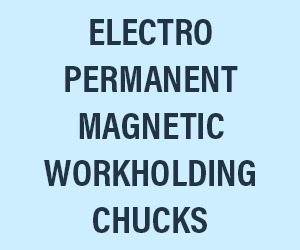The Politics of Manufacturing
Unemployment is not going to improve in our country unless we have political leaders who actually address our overall decline in manufacturing. With a presidential election right around the corner, Mike Riley shares some thoughts to consider from Washington insiders about the relationship between our government and American manufacturing, and a tax proposal that could potentially boost U.S. manufacturing.
Posted: October 8, 2012
The main reason the U.S. cannot rebate income taxes upon export is because of a provision in the General Agreement on Tariffs and Trade (GATT), which was later incorporated into the World Trade Organization (WTO). This provision makes the rebate or non-collection of income tax from exporters a prohibited “export subsidy.” In contrast, the rebate of a VAT upon export is permitted by the WTO agreements.
In WTO parlance, VAT is an “indirect tax,” and the non-excessive rebate of an indirect tax is not an export subsidy. The rebate of a direct tax such as an income tax, however, is considered to be an export subsidy. It is prohibited and subject to a variety of WTO offsets and penalties.
The economic effect of this divergence is enormous. It means, for example, that when a U.S. pipe company ships a ton of pipe to Europe it gets no tax rebate. In order to be profitable, that U.S. manufacturer must price its pipe at a level sufficient to pay the tax on the income generated from the sale.
In contrast, when a Brazilian pipe company sells the same ton of pipe to Europe it is granted a 17 percent rebate upon export of that pipe as it leaves Brazil. It can therefore be sold at a much more competitive price in the EU (or any other export destination, including the U.S.), thereby undercutting U.S. manufacturers.
In response to this problem, two major solutions have been offered. First, it has been proposed that the U.S. should change from an income tax to a VAT system. Currently this is not politically feasible. The other potential solution is to change the WTO agreements to allow the rebate of income taxes upon export by all producers.
But because the U.S. has the tax system in the world that suffers most heavily from this trade burden, it is very unlikely that the rest of the international community will join in agreement to this change.
The issue has been raised repeatedly over decades in the GATT and now in the WTO, but it appears to be essentially a dead letter in the Geneva WTO negotiations. Yet the impact of this unfairness continues to be enormous.
U.S. products do not get a tax rebate on export and are thus much less competitive in foreign markets. Moreover, U.S. products can be subject to the VAT in foreign export markets, so they are essentially double taxed, once in the U.S. (with the income tax) and once abroad (with the foreign VAT). This makes it essentially impossible for anything but the most competitive U.S. products to sell in export markets.
Fantastic products that have few or no competitors – such as sophisticated semiconductors or state-of-the-art agricultural machines from U.S. heavy equipment manufacturers – have a chance to sell abroad. But the average U.S. product cannot overcome the price disadvantage caused by the tax incidence differences.
A commodity product made in the U.S. has almost no hope of doing so at all. This results in day-to-day disadvantages for U.S. exporters and has hastened the migration of manufacturing out of the U.S. to foreign locations.
We propose a solution to this problem which has the potential to make U.S. exporters of goods much more price competitive and thus help to revive the U.S. manufacturing sector. Our proposal is that the United States create VAT Trade Zones where manufacturers could choose to locate and, inside these Trade Zones, would be required to pay a value-added tax in lieu of income tax.
In order to simplify the tax accounting treatment for companies who use such zones, one requirement would be that the plant would have to be within its own corporation. This corporation could be a member or “affiliate” of a large U.S. corporate group of companies whose main locus was outside the zone.
The rules to establish what income derives from the plant and thus would not be subject to income tax have been fairly well established under U.S. tax law and could be applied to companies inside the zone.
Within the zone, the corporation would be required to pay a U.S. VAT that would be established as part of this proposal. The exact rate of tax would be determined to equalize the tax effect versus the payment of income tax, but preliminary estimates are that a 5 percent to 10 percent VAT (which is actually lower than the VAT in many other countries) would be close to the right level.
The proposal would not be budget neutral, because if the manufacturer elected to export product from the zone, the company would have the VAT rebated as is the rule in substantially every other trading nation. But, as a result of the fact that the tax being rebated is a VAT tax and not an income tax, such rebates would not be inconsistent with the WTO, would not be a prohibited subsidy, and would not be subject to WTO penalties.
Certain other requirements would have to be met to ensure WTO consistency, such as non-discrimination as to foreign-owned companies, actual tax neutrality between the VAT and the income tax, and general availability of these VAT Trade Zones across companies and industry sectors. But these objectives could be accomplished.
The U.S. could also consider offering other assistance to companies located in such zones, similar to the incentives offered in special industrial zones in other countries.
While the lure of such zones in other countries is often superior industrial infrastructure and tax breaks, many also offer streamlined regulatory processes with “one stop” administrative offices. Others offer assistance with worker training and have dedicated funds to assist with research and product marketing through loans or grants. Some zones in China even offer “seed money” for recent college graduates to start entrepreneurial endeavors.
One indirect benefit from the location of manufacturing enterprises in such zones could be clustering, which leads to increased innovation and closer cooperation between input suppliers and downstream manufacturers.
Once this program went into effect it might ease the transition to a more broadly applied VAT. But even if that broader VAT were established, the other Trade Zone benefits described above could still remain in effect, such as those relating to streamlined administration, research grant money, and, perhaps most importantly, the clustering of manufacturing plants.
The question then becomes, why would this VAT Trade Zone system be easier to implement than adoption of a VAT across the entire economy? There are several reasons.
First, this proposal would create U.S. jobs. Rather than making things offshore because of the advantages accruing to countries using a VAT tax and rebating it, manufacturers would be drawn to the U.S. because of these VAT Trade Zones that would offer similar tax benefits. Second, the concern about the regressivity of the tax would be lessened as it would only apply to a small segment of the economy.
Next, the adminstration of this program could be eased by the fact that the U.S. already has a Foreign Trade Zone Program where certain trade and customs benefits are provided to users. As such, there is already a mechanism for setting up trade zones (though such zones have no VAT or other tax elements) and that mechanism could be extended into this program.
And finally, this proposal would encourage U.S. exports, a goal which is almost universally supported politically. In fact, President Obama has set a goal of doubling exports over a five-year period. Nothing could more fully accelerate progress toward that goal than the immediate enactment of this program.
The issue of the revenue impact would certainly have to be considered. However, it is worth noting that the U.S. has one of the highest corporate income tax rates in the world and there have been strong calls to lower that rate. Even President Obama has indicated a willingness to consider reductions in the corporate income tax rates.
Our proposal, rather than lowering the corporate tax rate overall, would be to enact this VAT Trade Zone Program and provide the benefits of tax rebates to manufacturers who create or preserve U.S. plants and jobs through increased exports.
We therefore urge this Administration and the Congress to pass immediate legislation to create the American Manufacturing VAT Trade Zone Program, (the AMVATTZ Program, as we call it) and proceed to unleash the export power and imagination of U.S. manufacturers.
Gilbert B. Kaplan is an international trade partner at the King & Spalding law firm in Washington, D.C. He formerly served as Deputy Assistant and Acting Assistant Secretary at the U.S. Department of Commerce. John C. Taylor is an international tax partner at King & Spalding in London. He previously was a partner at the London office of one of the “Magic Circle” firms.
Now I want to ask you: Do you agree or disagree with all of these points? What are your thoughts about the relationship between our government and manufacturing? Do you believe value-added tax (VAT) trade zones would increase our manufacturing? Your answers to these questions should play a big role in how you vote in November. Let me hear from you.















